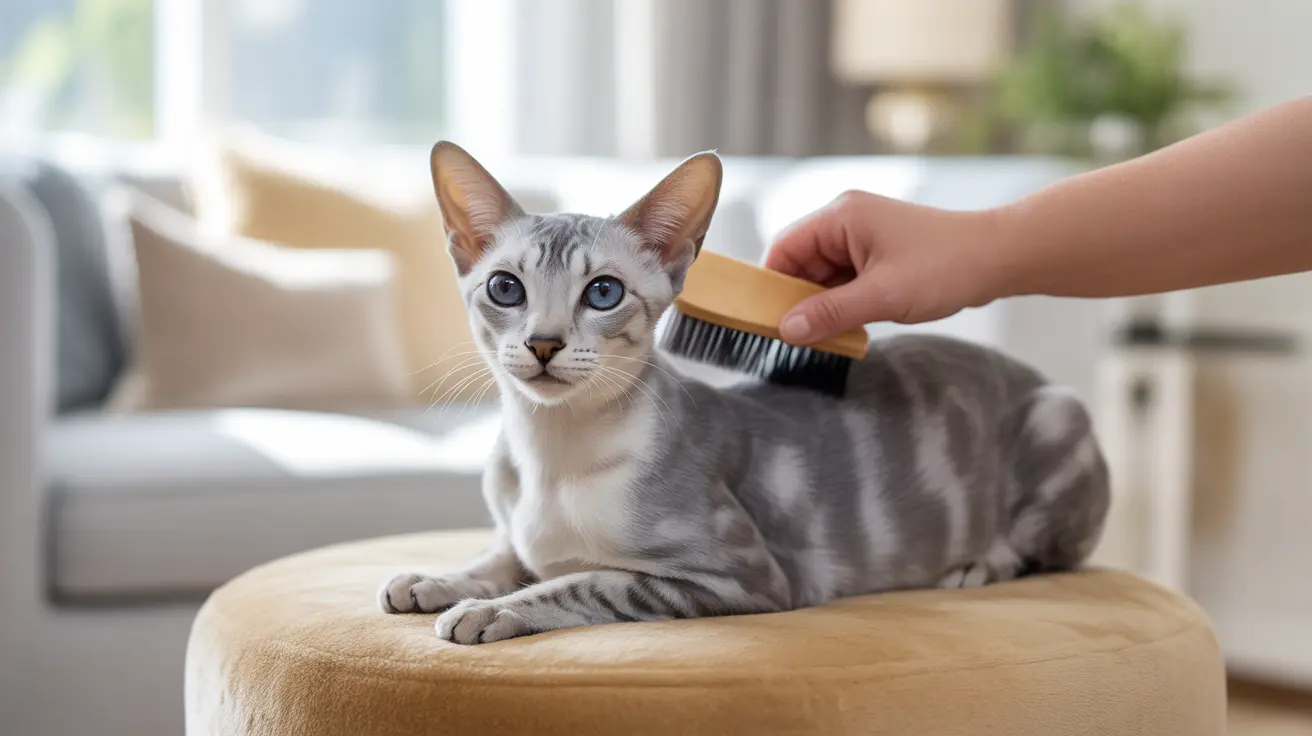For allergy sufferers dreaming of cat companionship, Oriental Shorthair cats often emerge as a potential solution. While these elegant felines are frequently discussed as a hypoallergenic option, it's crucial to understand the reality behind these claims and what makes this breed potentially more suitable for some allergy-prone individuals.
In this comprehensive guide, we'll explore the unique characteristics of Oriental Shorthair cats in relation to allergies, their grooming requirements, and practical strategies for managing allergic reactions. We'll help you make an informed decision about whether this striking breed might be compatible with your sensitivity level.
Understanding Oriental Shorthair Allergen Production
Oriental Shorthair cats, like all felines, produce the Fel d 1 protein - the primary allergen that triggers reactions in sensitive individuals. However, their unique coat characteristics contribute to potentially reduced allergen spread. These cats have a fine, close-lying single coat without an undercoat, resulting in significantly less shedding compared to many other breeds.
Their lower shedding tendency means fewer allergens are distributed throughout your living space, though it's important to note that they still produce allergens through saliva, skin cells, and urine. The distinction lies not in being truly hypoallergenic, but in their potential for reduced allergen distribution.
Grooming Requirements and Allergen Management
One of the advantages of Oriental Shorthairs is their relatively simple grooming needs. Weekly brushing with a soft brush or grooming mitt is typically sufficient to remove loose hair and reduce allergen spread. This minimal grooming requirement can be particularly beneficial for allergy sufferers, as it means less direct contact with potential allergens.
Regular grooming sessions should be conducted in a well-ventilated area or outdoors when possible to minimize exposure to released allergens. Using pet-specific wet wipes between brushings can help reduce dander and keep the coat clean.
Creating an Allergy-Friendly Environment
Success in living with an Oriental Shorthair while managing allergies often depends on implementing effective environmental controls. Install HEPA air purifiers in main living areas and bedrooms to filter airborne allergens. Regularly vacuum using a cleaner with a HEPA filter, and consider replacing carpet with hardwood or tile flooring.
Designate certain areas of your home as cat-free zones, particularly your bedroom, to ensure you have an allergen-free space for rest. Wash bedding weekly in hot water and consider using allergen-proof covers on mattresses and pillows.
Testing Compatibility Before Commitment
Before bringing an Oriental Shorthair into your home, arrange several extended visits with the breed to assess your reaction. Spend at least an hour in an environment with an Oriental Shorthair, ideally on multiple occasions, to gauge your sensitivity level. Remember that individual cats within the breed may trigger different levels of reactions.
Consider fostering an Oriental Shorthair temporarily if possible, as this provides a real-world test of compatibility while also helping a cat in need.
Frequently Asked Questions
Are Oriental Shorthair cats truly hypoallergenic, or how do they compare to other breeds for allergy sufferers?
Oriental Shorthair cats are not truly hypoallergenic, but they may trigger fewer allergic reactions due to their single coat and lower shedding tendency. They generally produce fewer airborne allergens compared to heavy-shedding breeds, making them a potentially better choice for some allergy sufferers.
How often should I brush an Oriental Shorthair cat to minimize shedding and reduce allergens?
Weekly brushing is typically sufficient for Oriental Shorthairs. However, during seasonal shedding periods, you might want to increase brushing to 2-3 times per week to better control loose hair and dander.
What are the best strategies for managing allergies if I bring an Oriental Shorthair cat into my home?
Key strategies include using HEPA air purifiers, maintaining a regular cleaning schedule, keeping the cat out of your bedroom, washing hands after contact, and consulting with an allergist about potential treatments or medications.
How does the grooming routine for Oriental Shorthairs help reduce allergens and prevent skin irritation?
Regular grooming removes loose hair and dander before they can spread throughout your home. Their simple grooming needs mean less manipulation of the coat, which can help reduce the release of allergens during maintenance.
Can Oriental Shorthair cats be a good choice for people with severe allergies, and what precautions should be taken?
While Oriental Shorthairs might be suitable for people with mild to moderate allergies, those with severe allergies should exercise caution. Essential precautions include extensive pre-adoption exposure, consultation with an allergist, and implementing comprehensive environmental controls before bringing the cat home.
Conclusion
While Oriental Shorthair cats aren't completely hypoallergenic, their unique characteristics make them a potentially suitable choice for some allergy sufferers. Success in living with these elegant felines while managing allergies depends on a combination of proper preparation, environmental controls, and consistent maintenance routines.
Remember that individual reactions vary significantly, and what works for one person may not work for another. Take time to test your compatibility with the breed and consult with both allergists and veterinarians to develop a comprehensive management plan that works for you and your potential feline companion.






